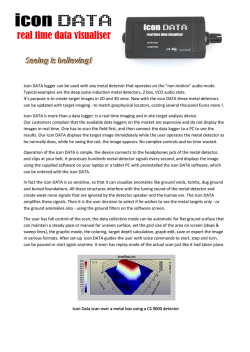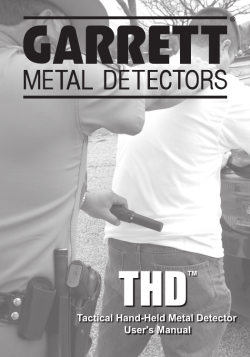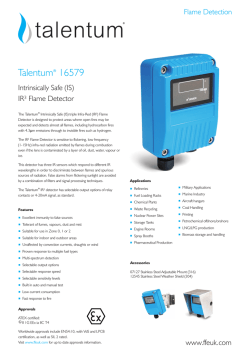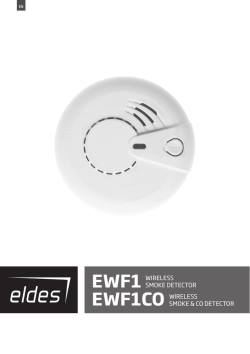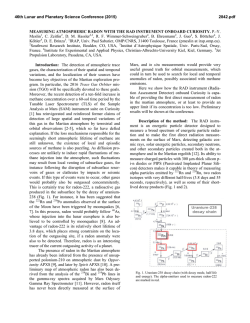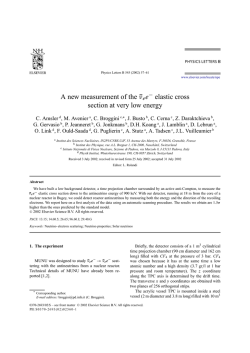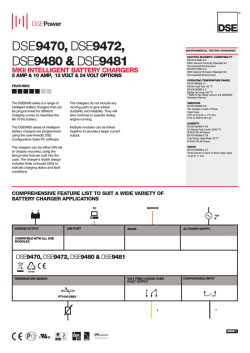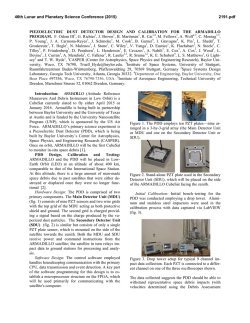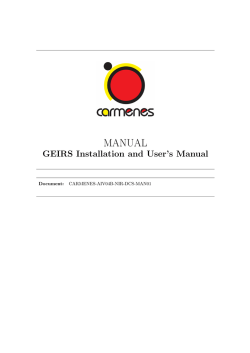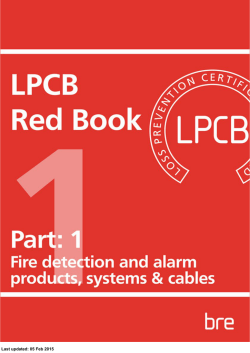
Tesoro Cibola metal detector
CIBOLA OPERATOR INSTRUCTION MANUAL CONGRATULATIONS! Your new Tesoro Cibola metal detector is part of a new series of detectors designed to provide you with many happy hours of enjoyment in the most rewarding hobby I can think of—treasure hunting. Ahead of you lie fascinating and exciting experiences as you step into the past— uncovering artifacts lost by past generations, or as you take pleasure in the great outdoors with family and friends searching for precious metals. I wish we could share these experiences with you, and all of us at Tesoro wish you the best of success. Your Tesoro detector is capable of meeting your needs in a wide range of treasure hunting situations. As with any other metal detector, familiarity with this instrument is probably the limiting factor in determining how successful you can be. I recommend that you read this manual and fully understand how to operate this detector before attempting to use it in the field. As you become more familiar with your detector through practice, your rate of success will increase dramatically. The Cibola is a precision electronic instrument that will last for years if properly cared for. Treat it right and it won’t let you down. Good Hunting! Jack Gifford GETTING STARTED - UNPACKING THE BOX Your Cibola was shipped with these parts: 1 Upper Pole Assembly Fully assembled, including upper pole stem with handle grip, padded arm bracket and control housing. 1 Middle Pole Assembly With Pole Lock 1 ABS Lower Pole Assembly Fully assembled, complete with two friction washers, mounting screw, and thumb nut. 1 9 x 8 Monolithic Searchcoil With 3’ Cable and Scuff Cover 1 9 Volt Alkaline Battery 1 Operator Instruction Manual 1 Tesoro Warranty Card If any of these items are missing, contact the Tesoro Authorized Dealer where you purchased your detector immediately. Assembling the Cibola is simple and requires no special tools. Just install the battery packs, mount the searchcoil on the lower pole assembly, connect the pole assemblies together, wrap the excess cable around the pole and plug the cable into the control housing. Finally, adjust the pole length and searchcoil angle and you're ready! INSTALLING THE BATTERY Your Cibola is equipped with an automatic battery test circuit so that you can always be sure you are getting top performance. The battery should be checked after the detector has been on for about 10 minutes and then periodically when used for long durations. To install or replace the battery, first make sure the SENSITIVITY control is set to POWER OFF—turned completely counterclockwise past the “click.” Remove the battery door from the back of the control housing. Do this by pressing your thumb firmly on the louvered square—at the bottom of the battery door—and sliding the battery door upward in the direction of the arrow. Check the polarity on the battery and on the diagram inside the battery compartment. Make sure that they match and simply drop a fresh 9 volt alkaline battery into the compartment. Note: If the battery is not installed properly, damage may occur to your detector. Replace the battery door by sliding it into place making sure the upper mount slots are in line and the lock tongue is snapped in place. ASSEMBLING YOUR DETECTOR 1. On the lower pole assembly, remove the mounting screw and thumb nut from the black nylon pole tip. 2. Insert the pole tip between the mounting ears of the searchcoil and align the holes of the pole tip and washers with those of the mounting ears. Note: The pole tip should fit very snugly into the mounting ears. 3. Insert the mounting screw through the holes in the mounting ears and pole tip—entering from the side opposite the cable connection. 4. Install the thumb nut on the mounting screw and tighten by hand. Note: Do not overtighten the thumb nut. It should be snug but not too difficult to loosen up. 5. On the middle pole assembly, depress the two spring buttons and slide the middle pole assembly into the upper pole assembly until the spring buttons click into the holes, thus locking the two assemblies into place. Tighten the pole lock to secure the two assemblies together. 6. Slide the lower pole into the middle pole until the spring buttons click into the first set of adjustment holes. Turn pole lock to tighten the assemblies into place. 7. Wrap the cable around the pole leaving enough slack near the searchcoil to permit searchcoil adjustment. Note: Do not allow the cable to flop loosely over the searchcoil. Since the detector is sensitive enough to “see” the tiny wires in the cable, a floppy cable can cause false signals as the searchcoil senses the moving wires. 8. Plug the male cable end into the female connector on the control housing and tighten the cable thumb nut. You are finished! Note: You will want to adjust the pole length and the searchcoil angle to your preference. ADJUSTING THE POLE & SEARCHCOIL The pole length should be adjusted so that the detector does not become uncomfortable or tiring after long periods of use. The detector grip should rest in your hand with your arm relaxed, your elbow straight but not locked, with the pole extending out in front of you at the approximate angle shown in the photo. You should be able to swing the detector back and forth in front of you—using relaxed shoulder movement—while keeping the searchcoil as close to the ground as possible. This swinging movement is often called a “sweep.” The searchcoil should not touch the ground during your sweep. The pole length should be adjusted to allow this without having to lift the detector with your elbow or shoulder. The searchcoil should rest about one inch above the ground while you are standing erect. The angle of the searchcoil should allow the bottom to be parallel to the ground. The pole length is adjusted by loosening the pole lock, then depressing the spring buttons and extending or shortening the pole until the spring buttons click into the set of holes that give you the most comfortable pole length. To adjust the searchcoil angle, simply loosen the searchcoil thumb nut slightly and move the searchcoil into the desired position. Tighten the searchcoil thumb nut by hand so that the searchcoil will hold in place. QUICKSTART - SELF-GUIDED TUTORIAL The Quickstart is designed to teach you how to use your new Cibola. It provides a quick and easy means of learning your detector and the concepts behind all of the functions. You will need the following items: 1. Your fully assembled Cibola. 2. An iron target (a small nail or screw will do), an iron washer, a nickel, a zinc penny (1982 or later), a quarter and a couple of different pull tabs. 3. A nonmetal table top or counter. Here’s what you will do: 1. 2. 3. 4. 5. 6. 7. Perform Audio Battery Test. Adjust THRESHOLD. Adjust SENSITIVITY. Perform Air Test in DISC Mode. Perform Air Test in PINPOINT Mode. Super Tune Your Cibola. Adjust FREQ Switch. Prepare for the Quickstart Place your assembled Cibola on the nonmetal surface. Make sure that there are no metal objects near the coil and remove any jewelry from your hands and wrists. Start with the controls like this: 1. THRESHOLD, SENSITIVITY and DISCRIMINATE LEVEL knobs turned completely counterclockwise. 2. FREQ switch in the center position. Perform Audio Battery Test Turn the SENSITIVITY knob from OFF to about 7 or 8. You will hear a series of quick beeps. If the battery is fully charged, you will hear 6 or 7 beeps. When you hear only 1 or 2 beeps, it will be time to replace your battery. This test is only performed when the detector is first turned on. If you would like to check the condition of your battery while hunting, turn your detector off and on again and listen to the beeps. Adjust THRESHOLD To adjust the threshold tone, push and hold the PINPOINT button and then turn the THRESHOLD knob clockwise until you hear a slight but steady tone. You will have to turn the knob to somewhere between the 10 o'clock and 3 o'clock position to get the best hum. Once you have set the THRESHOLD, release the PINPOINT button. This will put you back into the DISCRIMINATE Mode and you can continue with the Quickstart. The purpose of the threshold tone is to give a reference to judge targets for pinpointing and to super tune the Cibola. (For more information on super tuning, see the “Super Tune Your Cibola” section on page 13.) In the field, some targets may be small enough or deep enough that they will not be able to generate an audio signal by themselves. By monitoring a threshold tone, you already have an audio tone so changes are easier to hear. However, if the threshold is set too soft or too loud, small changes in the signal will be hard to hear. Take some time and find a threshold level that is right for you. Adjust SENSITIVITY The discriminate circuit uses a silent search mode, meaning that no sound will be heard until the coil goes over a target. The most common use of the detector is to hunt in the DISCRIMINATE MODE and push the PINPOINT button to pinpoint a target. This will give you the advantage of ignoring unwanted targets and not having to listen to the threshold hum until you are ready to pinpoint and dig a target. The all metal circuit uses a single channel to detect various metals. The discriminate circuit uses two different channels, then amplifies and filters them. The detector will then compare the signals and determine whether or not to beep at the target. While there is a great advantage to ignoring unwanted targets, it can make the circuitry more susceptible to interference. A number of outside conditions such as power lines, highly mineralized soil, and wet salt sand can cause interference. The SENSITIVITY knob is used to raise or lower the power to the operational amplifiers, which changes the gain. Gain is a measurement of how much a signal is amplified. The higher the gain the more depth and sensitivity to small objects a detector has. Unfortunately, any small interference that is amplified can cause the detector to become erratic. The SENSITIVITY control is used to find the best gain setting in any location without letting the detector become unstable. The SENSITIVITY knob is numbered from MIN to 10 and then has an orange area called the Max Boost zone. For normal hunting, anywhere in the numbered zone will work very well. However, the Max Boost will allow you to increase the power to the operational amplifiers to the point of overload. This may cause your detector to become unstable and force you to turn the SENSITIVITY knob to a lower setting. An overload situation will not hurt your detector, but it will maximize the gain that is used by your detector. This can, in certain conditions such as low mineralization in the soil, cause your detector to penetrate deeper into the ground and become more sensitive to small targets. Take some time to try waving targets in front of the coil with different sensitivity settings. Notice that the higher the sensitivity setting, the farther away from the coil that a target can be and still respond with an audio signal. Perform Air Test in DISC Mode As discussed before, the discriminate mode is used to filter unwanted targets from good targets. The principle behind this is pretty simple. The detector sends out a signal and then receives it back creating a small electronic field. As metal passes through the field that the detector generates, it causes a change in the received signal. The amount of change that each type of metal causes is fairly constant; therefore, we can tune our detectors to miss targets that we don't want to find. The change is based on the type of conductivity that each target has. The general list of conductive targets is as follows: iron, foil, nickels, gold jewelry, pulltabs, screw tabs, pennies, and silver coins starting with dimes and working up to silver dollars. This list is only meant to be a guide. There is a point that some pulltabs, nickels, and gold jewelry overlap. Also, the depth of the target and its orientation in the ground can change the received signal. A coin that is flat to the coil will produce a better signal than a coin that is on edge. Take some time to try different combinations of depths and orientations of your targets and find out how your detector responds. We are now ready to discriminate targets from each other. We will start with the DISCRIMINATE LEVEL at MIN. Please notice that the DISCRIMINATE LEVEL knob has words that correspond to the items that are discriminated out. All four targets (the iron, nickel, pulltabs, and quarter) will respond with a good audio signal at the MIN setting. Next, we will turn the DISCRIMINATE LEVEL up to IRON. This should be high enough to knock out the iron target and still get a positive response on the nickel, pulltabs, and quarter. When you are done with the IRON level, turn the DISCRIMINATE LEVEL to around the 5¢ setting. This level is high enough to knock out the nickel. At this time, the iron target and the nickel should give no response, while most of the pulltabs and the quarter will give a solid response. Next, turn the DISCRIMINATE LEVEL knob just past the TAB marking. At this time, most or all of the pulltabs should not give any audio signal. Only the quarter should give a strong signal. Now, roll the DISCRIMINATE LEVEL all the way to MAX. Notice that the quarter is still responding. The discrimination will not go high enough to lose most of the silver coins. This air test is designed to quickly show you how your discriminate mode works. Each machine may be a little different from all of the others, so you may want to take some time and try different targets to find responses of your machine. At a later date, you may want to build a test garden to test your detector in the field. Perform Air Test in PINPOINT Mode When you are hunting in the DISCRIMINATE Mode, the PINPOINT button will allow you to momentarily switch into the ALL METAL Mode. The PINPOINT button is springloaded and must be pressed and held to shift into the ALL METAL Mode. At this time, you are in the Silent Search Discriminate Mode. Press the PINPOINT button, and you will immediately hear the threshold audio tone. This indicates that you are now in the ALL METAL Mode. Your Cibola has a VCO-style ALL METAL Mode. You will find that as targets get closer to the coil, the threshold tone will get louder and higher in pitch. With the PINPOINT button pressed in, try waving your targets in front of the coil. Start from a distance of 10 to 12 inches away from the coil and slowly work your way closer to the coil. Then, try starting from 6 inches away from the left or right of your coil and work your way to the center of the coil. Notice the changes of the audio signal. Your strongest signal will always be closest to the center of the coil. Additional information can also be learned by the signal strength and pitch. A smaller or deeper target will give a less noticeable change in the threshold than a larger or shallower target will give. Take some time and try all of your argets at different depths to find out how your detector sounds. Take some time to try different DISCRIMINATE levels and then check them with the PINPOINT Mode. You will notice some distinctly different tones. Practice and experience will give you large amounts of information that will help you decide whether or not to dig a target in the field. Super Tune Your Cibola The Cibola can be set up to get even better depth and sensitivity while operating in the DISCRIMINATE Mode. Super tuning is accomplished by working in the DISCRIMINATE Mode and turning the THRESHOLD knob to the highest setting. Super tuning your Cibola will cause the threshold audio level to be set too high for accurate All Metal or Pinpointing operation. To start, turn the DISCRIMINATE LEVEL knob to just above the IRON setting and turn the SENSITIVITY knob as high as it will go without causing the detector to chatter. Check a target or two and notice how far away you can get from the coil and still receive a repeatable audio signal. Now, turn up the THRESHOLD knob and recheck the targets. You should see an increase in the distance from the target to the coil. Push the PINPOINT button. Notice that the threshold tone is far too loud to accurately identify some of your targets. Take some time to try different targets and settings in an air test to see how well your detector will work in the ground. Adjust FREQ Switch Your Cibola comes equipped with a frequency shift switch (FREQ1, FREQ2, and FREQ3). This switch is used to change the operating frequency of your detector. This ability will help you to work a larger number of areas. The most common use would be during a large hunt where another hunter has the same frequency machine as your detector. Two machines that are on the same frequency will start broadcasting to each other. This is called crosstalk. If you experience crosstalk in the middle of a hunt, just flip the FREQ switch to another setting. This is very easily done and can be done in the middle of a sweep. Changing the frequency can also help in some urban areas where there may be a high concentration of radio or cell phone traffic. If your detector is acting erratically after adjusting the SENSITIVITY, try shifting the FREQ switch and resetting the SENSITIVITY. Changing the operating frequency will not change the audio frequency of the signal in the speaker. The audio frequency is controlled by a microprocessor and will not shift. Conclusion Congratulations, you have just finished the Quickstart for your new Cibola detector and in the process have learned quite a lot about your detector. But experience is the best teacher. I recommend that you get out and practice with your detector as much as possible. Any time spent using your detector will give you valuable experience. OPERATING TECHNIQUES - FIELD USE Pinpointing a Target When pinpointing a target, the ALL METAL Mode can offer advantages over the DISCRIMINATE Mode, such as no false signals and no need to move the searchcoil to get a target response. A good method for pinpointing in ALL METAL Mode is “X-ing” the target with the searchcoil. Remember that the target's response sound is always greatest when the target is directly under the center of the searchcoil. To “X” a target, sweep the searchcoil over the target from side to side and then from front to back until you can identify the center of the X—the spot on the ground where the target response sound is the greatest. Pinpointing a target in DISCRIMINATE Mode is probably best done by “X-ing” as well. Remember that the detector will beep just as the target passes under the center of the searchcoil. Slowing the sweep speed down will help you pick out the center of the X because the target response is reduced at very slow speeds making it easier to correlate the sound with the coil center. Another easy method is to sweep the coil from side to side across the target in very short sweeps as you slowly move forward and backward across the target. Slow down the sweep rate and shorten the sweeps until you just barely get a response at one spot. The target will be directly below the coil center at this response time. Another method of pinpointing in the DISCRIMINATE Mode is to quickly change to the ALL METAL Mode to check the target response. Remember that the ALL METAL Mode is not susceptible to the false signals of the DISCRIMINATE Mode and can sometimes give a clearer and more consistent response to difficult targets such as a dime buried next to a pulltab. By switching back and forth between modes and comparing the target response sound in all metal to the target response sound in discriminate, you can often better identify the likely location of the target. Finally, raising the searchcoil during pinpointing can also help by narrowing the response to the target. Practice pinpointing often, and you will soon become more accurate and faster. Recognizing False Signals in Discriminate Mode When operating in the DISCRIMINATE Mode, some “false signals” may be caused by 1) heavy concentrations of trash metal objects, 2) very large trash metal objects, or 3) electrical interference. These signals are generally short, choppy sounds and sound different than “good signals” (good target response sounds). At the end of your sweep, as you reverse the coil direction, the detector is most susceptible to trash-induced noise. There are two ways to tell whether these sounds are good deep signals or trash “noise.” The first is by repeatability. Trash-induced noises will not be regular as you sweep the coil over the suspected target several times, whereas a good target response will be repeatable. The second method is to switch to the ALL METAL Mode and check the target response sound. If the response is weak, it may well be a deep, good target. But if the response is very strong, it is probably trash. Note that a coin close to the surface can give a double beep sound, but it is regular and repeatable. Raising the coil an inch or two will restore the single beep on surface targets. When searching in the DISCRIMINATE Mode, it is best not to use a higher DISCRIMINATE LEVEL setting than necessary. Nickels and most smaller rings are rejected when the DISCRIMINATE LEVEL is set to reject pulltabs on any metal detector that is a TR Discriminator like the Cibola. If you don’t dig any junk at all, you are surely passing up a lot of good finds as well. Set the DISCRIMINATE LEVEL only high enough to suit the conditions where you are searching. If there is any doubt whether a target is good or not, dig it. Recovering a Target If the target is shallow and the soil is soft, you may be able to “probe” and find the exact location of the target before you dig it. Since filling all holes after you recover the target is so important, digging a small precise hole is best. If the target is deep, you may need to dig a larger hole. As you dig, occasionally check the hole with your detector to see if you have moved the object, can probe it, or have already dug it. Be sure to fill all holes after you recover the target. Two methods are shown on the next two pages that work most everywhere. Be sure to protect your hobby by leaving the site cleaner than you found it and with all holes filled! RECOMMENDED RECOVERY METHODS GENERAL INFORMATION - CARE AND USE Basic Care The Cibola is a sturdy instrument, but it is not designed to withstand abuse. In caring for your Cibola, there are several important “DO NOTs” to remember. DO NOT use it to pry rocks loose or to beat bushes out of the way. DO NOT drop the machine into water. DO NOT use it unprotected in the rain. DO NOT leave it exposed at night where dew could form on it. DO NOT store it in places that could get extremely hot (next to a woodstove or in an attic). DO NOT leave it in the trunk of a car or in the back of a hatchback-style car where high temperatures could build up. DO NOT store it with the battery installed as batteries may leak. DO NOT spray lubricants such as WD-40, or any types of cleaners, solvents, sealants or other chemicals into or onto the electronic parts, witches, or controls. And finally, DO NOT attempt to modify or repair the detector’s electronics as this will void your detector's warranty. THE WARRANTY DOES NOT COVER DAMAGE RESULTING FROM AN ACCIDENT, NEGLECT OR ABUSE. Protecting Your Investment Often detectorists are disappointed when their new detector slowly becomes less and less responsive and seems to have lost some of its original peak performance. You can help avoid this from happening to your detector by following these basic care and protection guidelines: Operate your detector exactly as recommended in this Operator Instruction Manual. Use only high-quality alkaline batteries of the correct voltage. Never substitute a different voltage. When using a Ni-Cad battery, always use a separate convertible pack with the proper voltage output for the detector’s design. Remove the battery from the detector after each use. This will prevent damage to the detector if the battery leaks. The searchcoil cable is hard-wired to the searchcoil and protected by a strain relief. Inspect the strain relief frequently to make sure it is firmly attached and intact. Keep cables properly wound around the pole stems and protect them during use. Floppy, pinched, or cables that become snagged during use may short, causing erratic noises or unnecessary replacement of the searchcoil. Sweep the searchcoil carefully, especially when using around rocks and building foundations. Avoid hitting the searchcoil against hard, solid objects and surfaces. Keep your searchcoil slightly off of the ground during the sweep, especially when using in gravel or hard, rocky dirt. Always use a properly designed protective scuff cover on the searchcoil. (See "Optional Accessories" in the next section.) Remove and clean out scuff covers periodically to avoid buildup of mineralized dirt particles which will affect performance. The searchcoil is waterproof and can be submerged in either fresh or salt water. After the searchcoil is used in salt water, rinse it and the lower stem assembly well with fresh water to prevent corrosion of the metal parts. The searchcoil is waterproof but the electronics are not, so always prevent any moisture or water from entering the control housing and never allow the cable connectors to become submerged in water. If working in or near water, or if there is a possibility of rain, use a protective weather resistant pouch or plastic bag to cover the control housing. Make sure it can "breathe" in order to ensure against condensation buildup inside. After each use, clean the detector with a soft cloth to remove dust, moisture, or other contaminants. When transporting the detector in a car during hot weather, store it on the floor of the passenger compartment if possible. Using a carry bag gives additional protection. In any case, never allow the detector to roll around unprotected in the trunk or back of a pickup truck. Protect your detector from dust, moisture, and extreme temperatures during storage. When shipping, use the original factory carton or similar heavy-duty container and provide a minimum one inch of padding around all parts. Treat your detector as you would any sensitive electronic instrument. Though ruggedly constructed and designed to withstand the demands of normal treasure hunting, proper care is essential. OPTIONAL ACCESSORIES Tesoro metal detectors and genuine Tesoro accessories are sold only through independent Tesoro Authorized Dealers, who are almost always metal detectorists themselves. They can answer your questions about your Tesoro detector, what accessories may be helpful, and about metal detecting in general. See your Tesoro Authorized Dealer for more information and prices on optional accessories. Searchcoils The 9 x 8 monolithic searchcoil provided with the Cibola is designed for best all-around performance. Optional searchcoils may add to your detector's performance. Smaller searchcoils give better “target separation”—that is, more distinct target response for metal objects buried closely together—which is very useful when hunting trashy sites. Very small searchcoils can deliver the best response and depth to small targets such as fine gold chains with some sacrifice in depth on larger objects. Larger searchcoils give a wider sweep, cover more ground, and provide greater depth especially on larger objects; however, they may not detect some very small objects such as half dimes and will have difficulty in very trashy areas. Widescan searchcoils ignore ground mineralization better than concentric searchcoils and may offer improved performance in extreme ground conditions. Selecting the right optional searchcoil depends on factors such as what you are searching for and search site conditions. No one searchcoil is better than all the rest. Several optional interchangeable searchcoils are available for the Cibola. They are all easy to mount and require no special tools. See the next page for a list of these searchcoils with the Tesoro part # and description. Tesoro Searchcoils Tesoro Part # Description COIL-575RC-SC-G 5.75” round concentric COIL-7EC-G 7” elliptical concentric COIL-8RC-G 8” round concentric COIL-8.5RW-G 8.5” round widescan COIL-11RW-G 11” round widescan COIL-12x10W-LC-G 12x10” widescan Optional scuff covers are also available for any Tesoro searchcoil. Headphones Most metal detectorists prefer to use headphones instead of the detector's built-in speaker. Headphones help block out background noise (such as wind) and make it easier to hear faint signals. Headphones with a built-in volume control will allow you to adjust the sound volume to your preference. SPECIFICATIONS Operating Frequency 14.3 kHz, 14.5 kHz, 14.7 kHz Searchcoil Type Monolithic (Carbon Fiber) Searchcoil Size 9x8 Cable Length Approx. 3’ Audio Frequency Approx. 293 Hz or VCO Audio Output 1½” speaker and headphone jack Headphone Compatibility ¼” stereo plug Weight (may vary slightly) 2.2 lbs. Battery Requirement One 9 volt DC (alkaline) Battery Life (typical) 10 to 20 hours Optimum Temperature Range 30° to 100° F Optimum Humidity 0 to 75% R.H. Pinpoint All Metal Operating Modes Silent Search Discriminate Metal Detectorist's Code of Ethics 1. Always check federal, state, county and local laws before searching. It is your responsibility to "know the law." 2. Abide by all laws, ordinances or regulations that may govern your search and the area you will be in. 3. Never trespass. Always obtain permission prior to entering private property, mineral claims, or underwater salvage leases. 4. Do not damage, deface, destroy, or vandalize any property, including ghost towns and deserted structures, and never tamper with any equipment at the site. 5. Never litter. Always pack out what you take in and remove all trash dug in your search. 6. Fill all holes, regardless how remote the location. Never dig in a way that will damage, be damaging to, or kill any vegetation. 7. Do not build fires, camp at or park in non-designated or restricted areas. 8. Leave all gates and other accesses to land as found. 9. Never contaminate wells, creeks, or any other water supplies. 10. Be courteous, considerate, and thoughtful at all times. 11. Report the discovery of any items of historic significance to the local historical society or proper authorities. 12. Uphold all finders, search and salvage agreements. 13. Promote responsible historical research and artifact recovery and the sharing of knowledge with others. WARRANTY SERVICE Your Tesoro metal detector is covered by a Limited Lifetime Warranty, the terms of which are listed below. If your metal detector should require service, you may return it to the Tesoro factory at the address below. LIMITED LIFETIME WARRANTY This warranty gives you specific legal rights, and you may have other rights which vary from state to state. This instrument is warranted to be free of defects in material and workmanship as long as it is owned by the original consumer purchaser. This warranty is not transferable and is valid only if the warranty registration card has been completed and mailed within 10 days of purchase. TESORO will, at its option, repair or replace any instrument covered by this warranty, without charge, except for transportation charges, at its factory in Prescott, Arizona. This warranty excludes batteries, damage caused by leaky batteries, cable breakage due to flexing on body mount units, and wear of the searchcoil housing. Also excluded are instruments which have been abused, altered, or repaired by an unauthorized party. Under the copyright laws this documentation may not be copied, photocopied, reproduced, translated or reduced to any electronic or machine-readable form, in whole or in part, without the prior written consent of Tesoro Electronics Incorporated, except in the manner described in this documentation. © 2001 Tesoro Electronics Incorporated. All rights reserved. Printed in the United States.
© Copyright 2025
